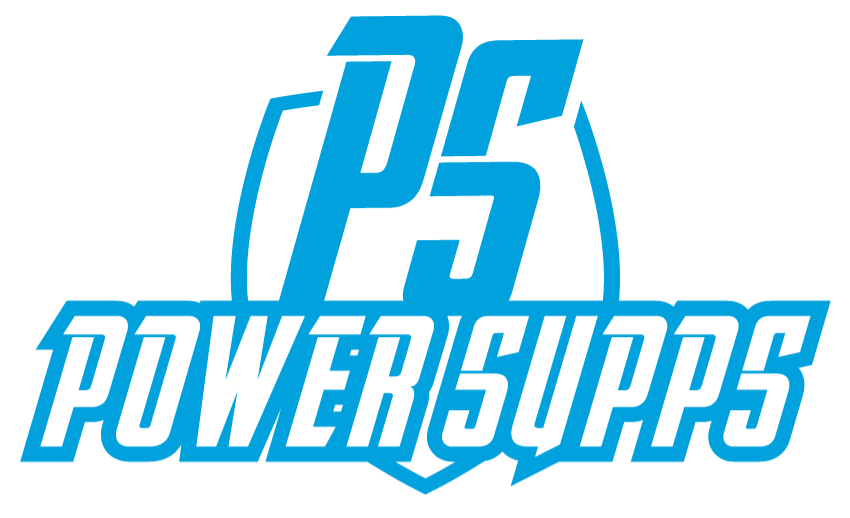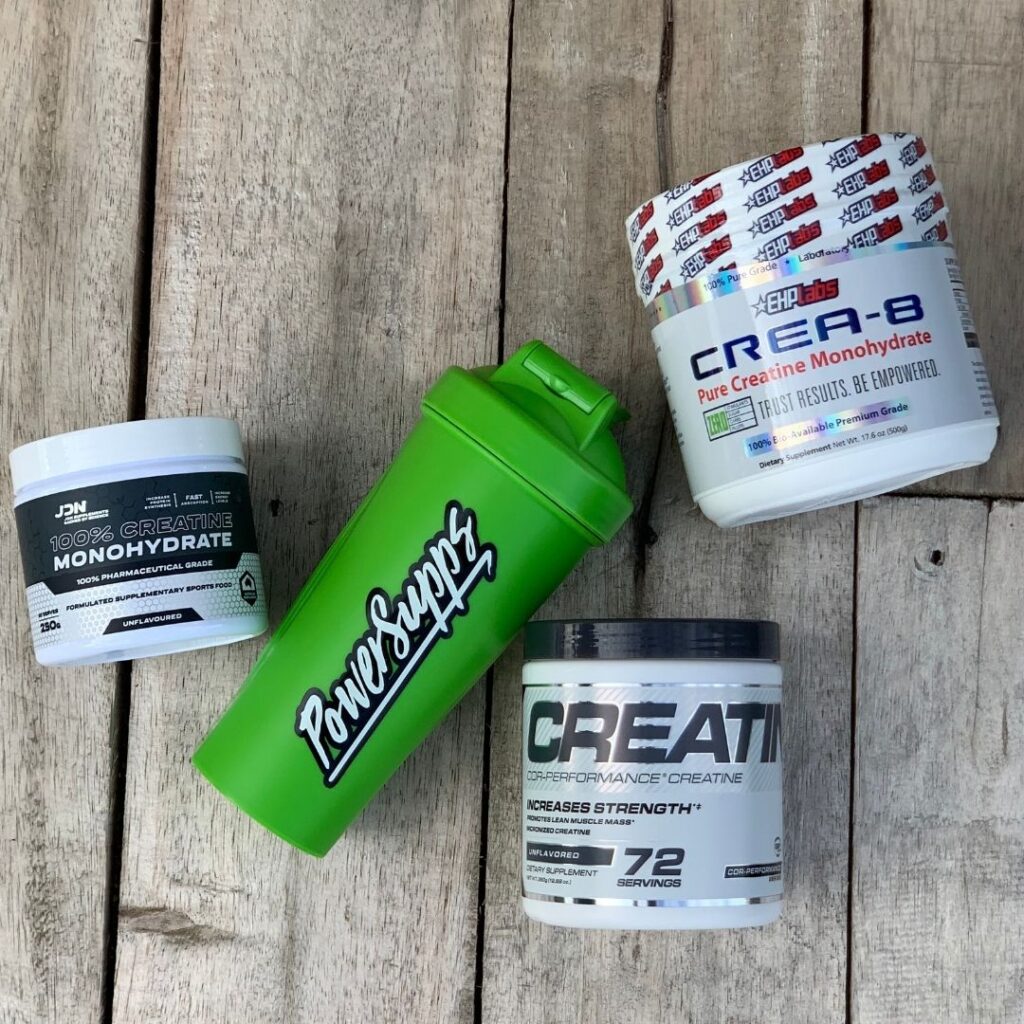Supplements
Creatine Loading Phase
Chances are that at some stage of your fitness journey you will have dipped your toe into the world of creatine supplementation. In fact, it is not uncommon for the words ‘creatine’ and ‘muscle gain’ to appear synonymously. Second to this is Creatine and “loading phase”. Creatine has since become one of the most heavily researched supplements to date. Not only that, creatine has become an incredibly popular supplement and for some very good reasons.
With it’s popularity however comes a multitude of questions surrounding what exactly it does and how best to use it. Potentially one of the more common questions surrounding creatine is in regards to what’s knows as the ‘creatine loading phase’. Chances are that’s it’s a significant question on your radar too. Well we’re about to help you out a little here. We’re going to explore all things creatine and in particular the creatine loading phase and whether it’s necessary.
What Is Creatine And What Does It Do?
Creatine itself is a combination of three different amino acids: Glycine, Arginine, and Methionine and is found naturally in red meat and fish. It is classed as a non-essential amino acid as the body has the ability to produce it itself without the sole reliance on obtaining it from the food we eat. Although it’s made in the liver and kidneys, the majority is actually stored in our skeletal muscles ready for immediate use.
The creatine is stored in the muscles is in the form of phosphocreatine. Phosphocreatine is a form of stored energy within the cells and assists our bodies to produce energy in the form of ATP. Essentially the more ATP we have the greater our output and performance is notably enhanced. Although our bodies can make it’s own creatine, taking creatine gives the ability to increase these stores of phosphocreatine. Having a larger creatine phosphate pool leads to the faster regeneration of ATP.
On the surface, creatine already looks like it surpasses the hype and delivers in the sense of how it performs. But it doesn’t simply end there. Creatine is highly beneficial for it’s specific performance enhancing effects that lead to an increase in overall strength, muscle mass and enhances repair and recovery.
Check out the full range of Creatine products here!
Benefits of Creatine
Now you may think that creatine is a supplement reserved for bodybuilders and athletes. This is definitely not the case at all. Creatine is a highly beneficial ergogenic aid that is suitable for a broad range of individuals. Let’s take a closer look into the benefits of creatine supplements and the outcomes on overall performance.
Increased Muscle Mass
Potentially the most popular of all of the benefits is the effects of creatine on muscle mass. Creatine has been shown to have both short and long term effects on increasing muscle mass.
Remember when we said earlier that supplementing with creatine can increase the stores of phosphocreatine in the muscles. Well having a larger pool of phosphocreatine means that your body has the ability to train at a greater intensity for longer. Creatine could just be your answer to getting out those couple more reps each set. Pushing your body that bit further will over time this will result in more substantial training adaptations and an increase in lean muscle mass.
Enhanced Strength and Overall Performance
Stores of ATP are depleted rather rapidly during intense bouts of physical activity. Supplementing with creatine allows your body to produce a greater amount of energy for a longer period of time. This increased capacity of the body to produce ATP also leads to an increase in overall strength and power. And as creatine itself is also a source of fuel, increasing the phosphocreatine stores will provide you with a much greater energy bank for your workouts.
Enhanced Repair and Recovery
There is possibly nothing more satisfying than training hard and seeing the results of your efforts. Training shouldn’t be the sole recipient of your efforts however. Repair and recovery are a large component of the overall results that you will see. This is where creatine comes into play.
Creatine is brilliant for replenishing glycogen stores and works in a couple of ways. During short bursts of intense exercise such as weight training, glycogen turnover is rather rapid. Supplementing with creatine will allow for glycogen replenishment at a faster rate. Bring on the supercharged increase in exercise performance!
Now when it comes to endurance forms of exercise or where training volume is increased, creatine will also come to your aid here too. Supplementation with creatine will allow for glycogen stores to be loaded up and aid in reducing the fatigue experienced over these longer forms of physical activity.
What is Creatine Loading?
Now this is where we start to get into the nitty-gritty so to speak. Creatine loading is essentially the process of ‘loading’ up on creatine or taking a larger amount than what is considered to be a maintenance dose over several days. Doing this will allow for intramuscular creatine stores to be at capacity as quickly as possible.
With a normal healthy diet that includes red meat and fish, creatine stores will be approximately at 60-80%. Ideally the concept behind the creatine loading phase is that the process itself results in faster saturation of the creatine stored within the body.
Dosage
Loading Phase Dosage
When it comes to dosage it is suggested that 5 grams or creatine four times per day for a period of 5-7 days is shown to be an effective loading protocol. The idea is that once the muscle creatine stores are saturated, a lower dose can then be maintained.
Maintenance Phase Dosage
Typically the maintenance dose ranges from 3-10 grams per day and can be taken on a long-term basis and are sufficient enough to maintain the higher storage levels. If creatine is only taken short-term the stores in the muscles will gradually deplete back to their normal levels prior to the supplementation.
When Is The Best Time To Take Creatine?
When it comes to the best time to take creatine, well this is somewhat of a hot topic. Creatine is a safe stand-alone supplement that can be taken on a daily basis. Generally speaking on training days creatine is best taken prior to or just after your workout. On rest days, creatine can still be supplemented with food at the maintenance dose to maintain creatine saturation in the muscles.
What Are The Advantages Of Creatine Loading?
May Produce Faster Results
We all want faster results right? Taking advantage of the creatine loading phase can provide results in as little as a week. Seems to good to be true. Creatine is a supplement that in the immediate short term will provide:
- Improved performance.
- Significant increase in lean body mass.
- Increase in strength and power.
Supports Muscle Size
Creatines biggest claim to fame is the fact that it increases muscle size and strength. And it does so very effectively. The immediate gains are the result of water being drawn into the muscle cells. Long term this intramuscular fullness activates the specific pathways that ain in muscle protein synthesis, strength and overall performance.
Enhanced Muscle Recovery
Research suggests that creatine may play a significant role in recovery form resistance training. Less downtime can lead to an increase in the frequency of training and also aids in injury prevention.
Is Creatine Loading Necessary?
Although loading creatine may seem advantageous, it isn’t completely necessary. The loading phase does saturate your muscle creatine stores however, a lower dose taken daily has been shown to have the same effect. This may take a little longer but overall the result will be the same.
If you were to load creatine with a daily dose of 3-5 grams the benefits will be achieved at around the 3 week mark. Whether you choose to load with creatine may depend on your specific timeframe. If you are eager to begin training at an optimised potential then the loading phase may be implemented for the more immediate results.
Does The Type Of Creatine Matter?
If you are somewhat familiar with creatine as a supplement you will know that there are a few different types. The three most common are:
- 1. Creatine monohydrate
- 2. Creatine Ethyl Ester
- 3. Creatine Hydrochloride
To keep things simple, creatine monohydrate is the most well studied form and also too the most recommended form. Although it may be the cheapest option of the types this is no reflection on it’s overall effectiveness.
Final Thoughts
Optimising muscle creatine levels can essentially be done safely in two ways, fast or slow. Whether the faster option is more appealing to you, well that may depend on your individual circumstances.
Loading with 20 grams of creatine per day divided into 3-4 doses for approximately 7 days generally is enough to optimise your muscle creatine levels to translate to performance enhancing results in and out of the gym.
The slightly longer option of 3-5 grams per day over several weeks will still produce the same result and is still highly effective.
So whether you are an athlete who is heavily invested in your training and sports nutrition, or simply wanting to achieve some noteworthy performance results, creatine is certainly worthy of a place in your daily supplement routine.

